Raspberry Cane Borer
The raspberry cane borer (Oberea bimaculata), is sometimes referred to as raspberry cane girdler. This beetle lays an egg in a d-shaped hole cut near the tip of primocanes.
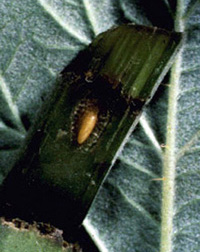
The adult then girdles the cane both above and below the egg.
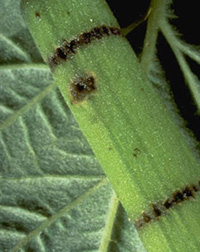
This causes the primocane tips to wilt, and in some instances, to break.
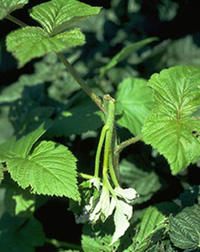
If tips are not removed below the girdle, then eggs will hatch and larvae will burrow down the cane into the crown.
Flat-headed Cane Borers
There are multiple species of flat-headed cane borers. Two prominent pests of raspberry are the Rednecked Cane Borer (Agrilus ruficollis) and the Bronze Cane Borer (Agrilus rubicola). These beetles do not girdle canes as does the Raspberry Cane Borer (Oberea bimaculata).
Adults of both insects feed along leaf edges. Females insert eggs into young canes. Borer larva, or grubs, hatch and tunnel inside the cane while feeding. This causes a symmetrical gall or swelling to form.
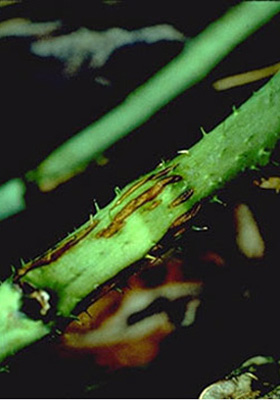
Canes are weakened, wilting above the swelling, and sometimes breaking off.
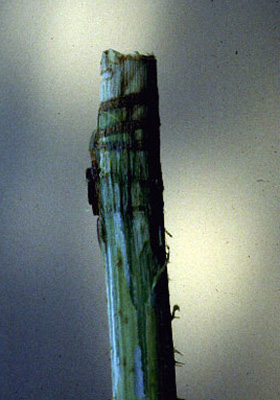
Yellowing of upper portion of fruiting cane; lower portion of cane remains unaffected.
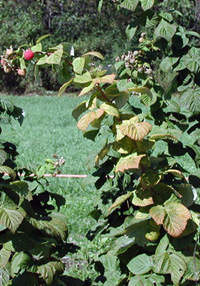
Removal of leaves reveals borer swelling.
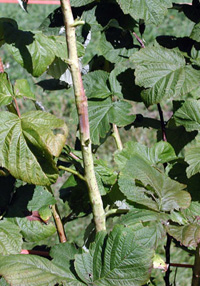
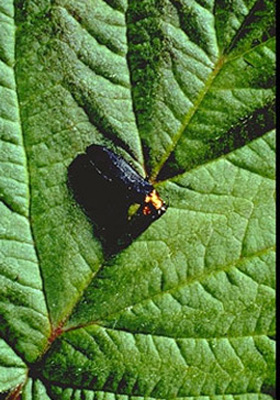
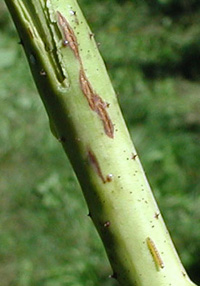
More information:
- Raspberry Borers– (University of Connecticut)
- Raspberry Cane Borer – (University of New Hampshire)
- Rednecked and Raspberry Cane Borer – (University of Kentucky)
Use these resources if you need additional help with diagnosis and to find solutions to your problem.


